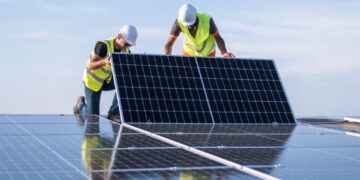Investment in U.S. offshore wind projects are set to hit $78 billion (€69 billion) this decade, in contrast with an estimated $82 billion for U.S. offshore oil and gasoline projects, Wood Mackenzie data shows.
This would be a remarkable feat only four years after the first offshore wind plant — the 30 megawatt (MW) Block Island Wind Farm off the coast of Rhode Island.
According to the Department of Energy (DOE), there are 28 US offshore wind projects in the planning stage, with the biggest clusters along the East Coast, from Massachusetts to Virginia.
There are also 15 active commercial leases for offshore wind development in the U.S. and if they are fully built, there is the potential to support approximately 25 GW of offshore wind capacity.
Wind energy, both onshore and offshore, is now the US’s top choice for new power, with 39 per cent of new utility-scale power sector additions at 107 GW — enough to power 32 million homes.
It is also the largest renewable energy source in the country, supplying over 7 per cent of the nation’s electricity.
The domestic offshore wind market is smaller than the onshore sector, where capacity is now over 100 GW, but growing.
“The shift of investment towards offshore wind in the US is due to a decreasing amount of leasable space on land because an increasing number of landowners and communities are objecting to local siting,” says Annie Hawkins, Executive Director, Responsible Offshore Development Alliance (RODA).























